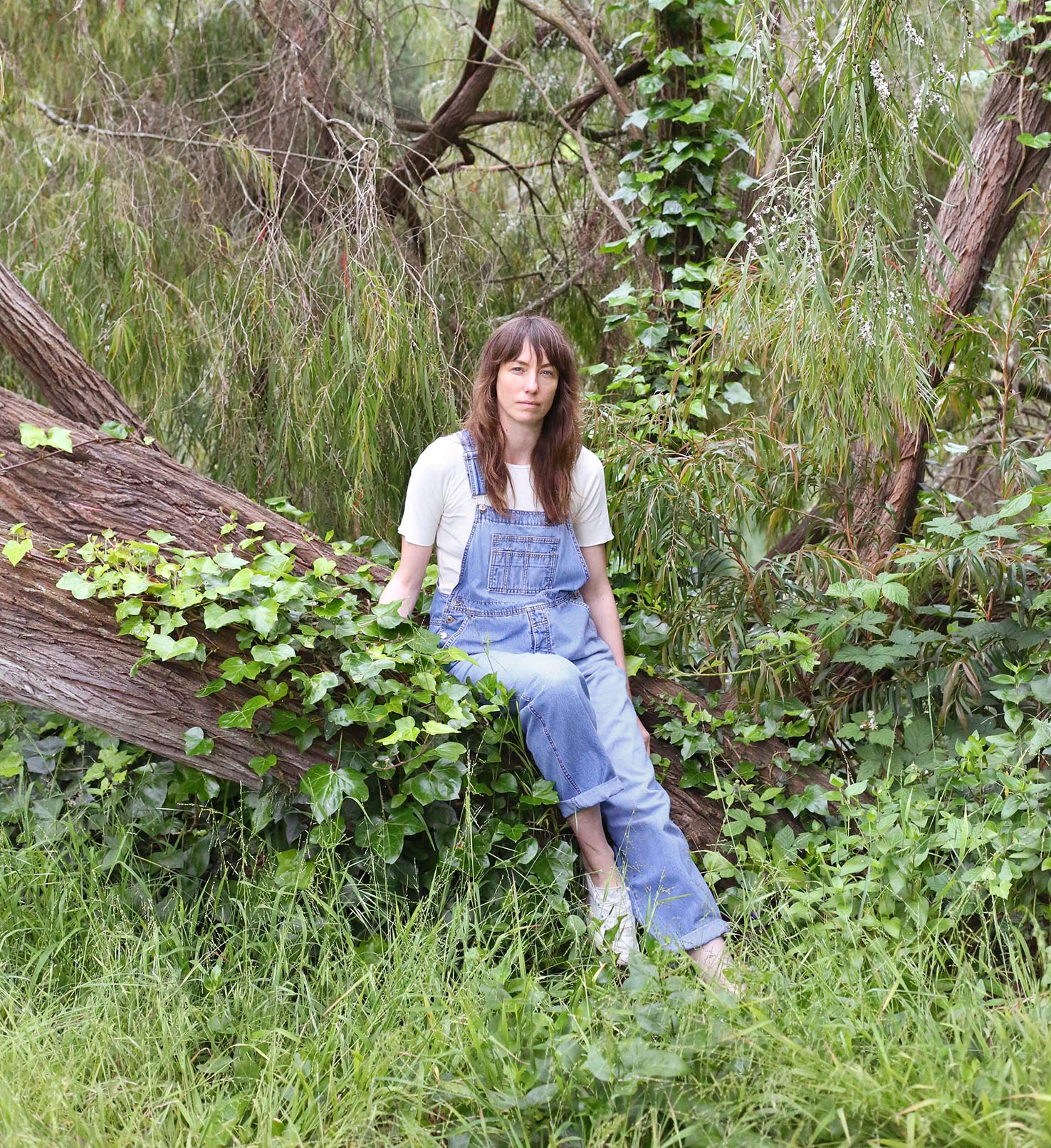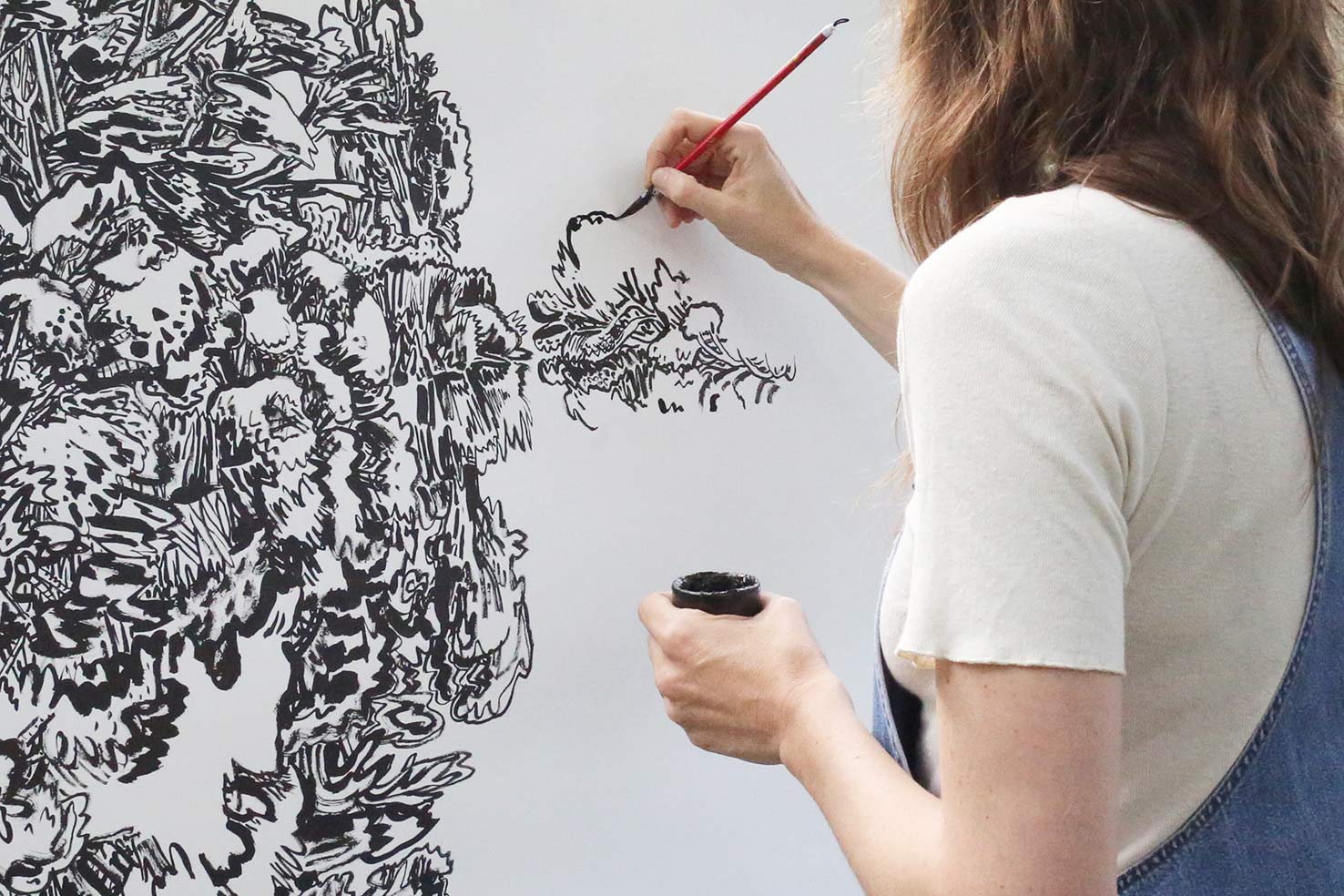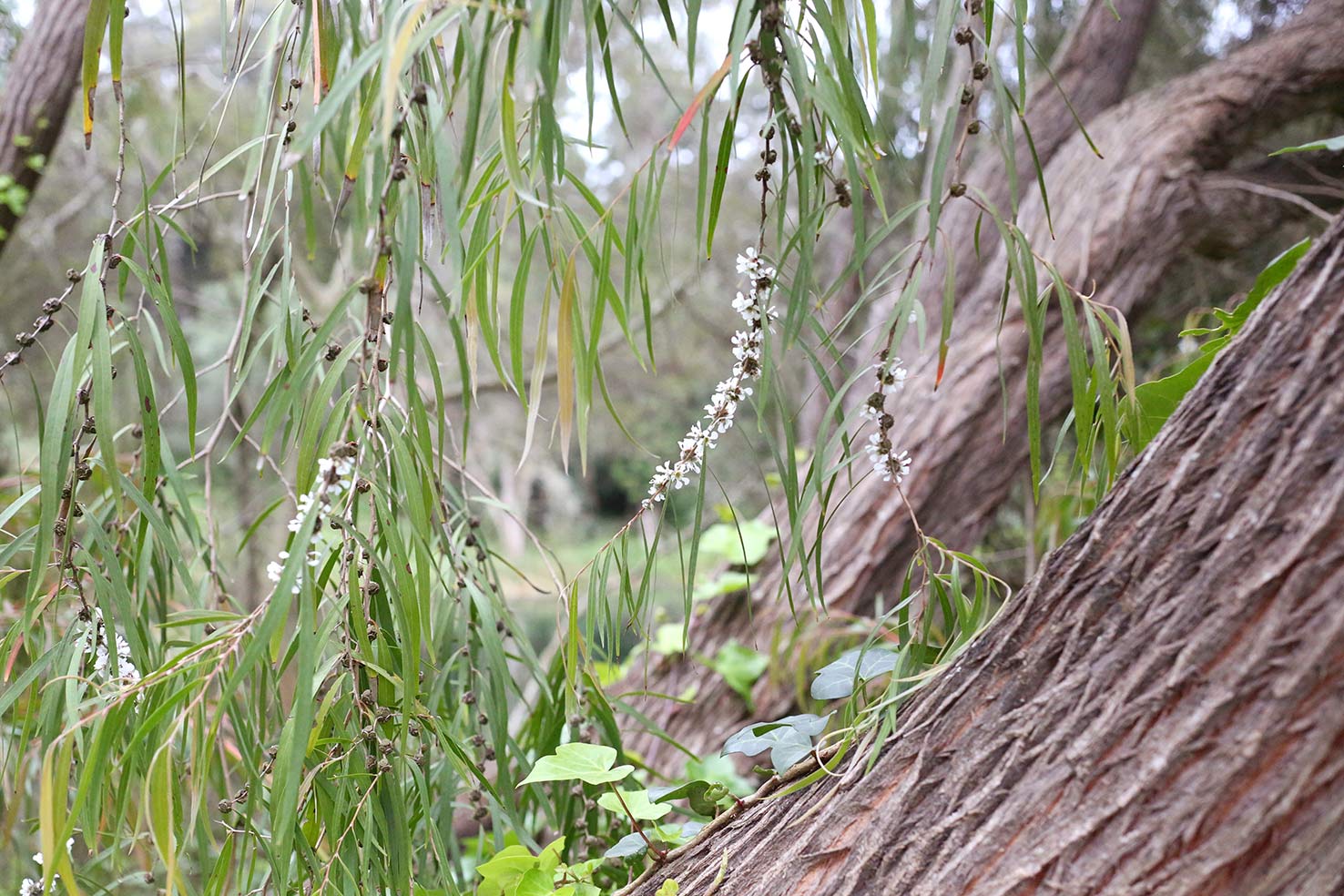Interview: Johanna St. Clair

Lena:
Thank you for agreeing to be the first artist in this new project. This piece of yours is really impressive! It’s been a pleasure for me to work closely with Waterfall – from prepping it for printing, to helping stretch the canvas– I’ve gotten to know the lines and marks really well. The size of it is striking. I remember visiting your home to look through your paintings, and I turned the corner into your bedroom and saw this piece hanging on your wall and thought– it would be amazing to start this project with this painting.
Johanna:
I’m honored to be the first artist! And I’m very happy with how the print came out, it’s beautiful.

Lena:
Can you tell me about the materials you use in your art practice?
Johanna:
I use Sumi Ink and a brush (often a Japanese calligraphy bush) on paper. I work outdoors and draw from nature. I revisit the same subject over and over, but each piece is made very quickly and directly. I like to work in the morning when the world is quiet.
I noticed that you call the piece a painting, even though I use a brush I always think of them as drawings. I guess they are both- paintings and drawings. Or maybe they are a collection of marks that is neither a painting nor a drawing.

Lena:
Please tell me about the day you made this Waterfall piece. Where were you and why did you choose the location? Do you remember the weather that day? How did you choose your place to sit and begin? How long you were there? Any small details like what you were wearing and what food you brought with you?
Johanna:
I first drew that waterfall on a weekend walk with my family. I was at a wet spring and the water was really racing. The spot isn’t very far outside the city, so I started going back very early in the morning and made about five or six smaller versions before I brought out the big paper. It was challenging to work that big because the good vantage point was a very narrow little rocky ledge, so I had the big paper clipped to a big board and I had to hook the bottom with my foot to hold onto it. The water had so much energy, it was intense and it felt like a race to get it down, both because it was physically challenging drawing on that little ledge, and because it was such a dynamic subject, so complex and fluid. It was cold and damp so I was wearing warm layers but there was a guy who jumped into the swimming hole at the center of the waterfall every morning for a (very) cold dip- he told me how it kept him from getting sick. I made the drawing in one five-hour session but the whole month of spending all my free time there was an important part of the process.

Lena:
You have a creative business, Mollusk. How does painting fit in with the other work you do? How much time do you dedicate to painting/drawing? Does it feel separate or does everything flow together?
Johanna:
Mollusk and my art feel very different. Mollusk is collaborative, it’s creative teamwork. I run the clothing line, work with our wholesale accounts, make graphics for tee shirts, and design clothing. All of those projects are collaborations which makes them very fun. My drawing practice is solitary. The drawings require complete focus- each piece is such a wild ride that I get totally lost in them. Mollusk is a business so it requires a long view- planning, calculating risks, making tough decisions. I don’t bring any of that to the art. I just draw and hunt for drawing subjects. I start in one corner and fling ink until I fill the paper. It’s very simple and I should probably put some energy into the business side but I don’t.

Lena:
Is there anything else you’d like to tell about this Waterfall piece?
Johanna:
On the advice of the cold-dip guy in the waterfall, I’ve been taking a daily cold shower and I haven’t been getting sick. More time to draw!
Lena:
Thank you!